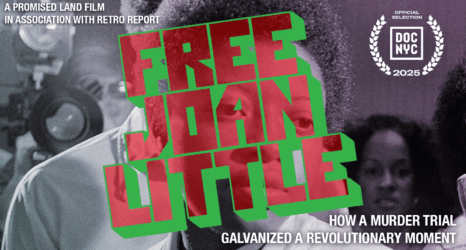When I heard that Piper Kerman wrote the book Orange is the New Black about her experience at the Danbury, Connecticut federal prison camp, I was excited. I served part of my 15-year sentence with her and I found the book an accurate snapshot of Danbury FPC. (Full disclosure: I am “Esposito” in Piper’s book.)
When I learned that there would be a Netflix series based on OITNB, I couldn’t wait to watch it. I stopped watching it early on in the second season though, because sadly, the series doesn’t reflect the women in the camp as I know them.
For example, the visiting room scenes do not adequately portray the pain that permeates the room as mothers and their children are forced to sit side-by-side and not touch or comfort each other. The Bureau of Prisons used to hold a family day where children and their parents could spend hours together in a less restrictive environment and touch and play. This humane visitation day has since been cancelled by the BOP.
The series doesn’t show how many nonviolent women who were given harsh mandatory-minimum sentences are denied the right to become mothers because their childbearing years were stolen from them. The series doesn’t show how a male gynecologist was so rough giving pelvic exams to women who had not been sexually active in years that women refused PAP smears because of the pain he inflicted.
The series doesn’t show how in 2013, despite the BOP’s “mission” of keeping people in prison within 500 miles from their homes, the BOP decided to shut down the only federal correctional institution for women in the northeast to convert it to a male prison. The women were being sent to Alabama—over 1,100 miles away. My website, Reentry Central, broke the news nationally and a furor arose among senators, judges and the public. Most of the incarcerated women who were citizens in the northeast were then sent to federal holding facilities in New York and Philadelphia that were designed to hold people going to court, not those with sentences. The lack of outdoor recreation and programming, including participation in a drug program that allows a woman to receive a year off her sentence, have been decried by politicians who have repeatedly asked the BOP when the promised new northeast institution for women will be built. The projected date is now 2016.
Neither does the series show the real solidarity among women behind bars. When a woman is called to see the chaplain, automatically women will drift to her, and walk with her as far as they are allowed, because they know she is going to be told of the death of a loved one. They will be waiting to escort her back to her bunk and will stay with her or give her the space she needs. Women risk being sent to SHU for bringing back milk, fruit and vegetables from the chow hall to give to a pregnant woman. When the new mother comes back to the camp or prison without her baby, women are there to greet her with hugs. Women will carry an ailing woman up the stairs to the sick call room. There is a strong sense of sisterhood at Danbury that the series ignores.
The series provides a lot of sex scenes. While there is certainly sex in prison, it is nowhere near as rampant as the series makes it out to be. There are penalties to be paid for being caught having sex. Some of the staff are extremely homophobic and will separate couples by sending one woman to another facility.
The ACLU points out that the U.S. has 5 percent of the world’s population, but according to ABC News:
- America incarcerates 30 percent of the world’s female prisoners.
- Every day, 174 new women are incarcerated in the U.S.
- 63 percent of female prisoners are incarcerated for nonviolent offenses.
I know the series is meant to be entertaining, but the mass incarceration of women isn’t a joke. OITNB offers an unparalleled opportunity to help change national opinion about the rapidly increasing numbers of women being incarcerated in the United States today. The OITNB scriptwriters have a chance to help stop this growing tragedy. The real stories about the real women on which OITNB is based are sad, compelling and nationally significant. OITNB viewers need to hear them.
Photo from the launch of Real Women Real Voices courtesy of the author. All of the women pictured served time at Danbury and are now free.





